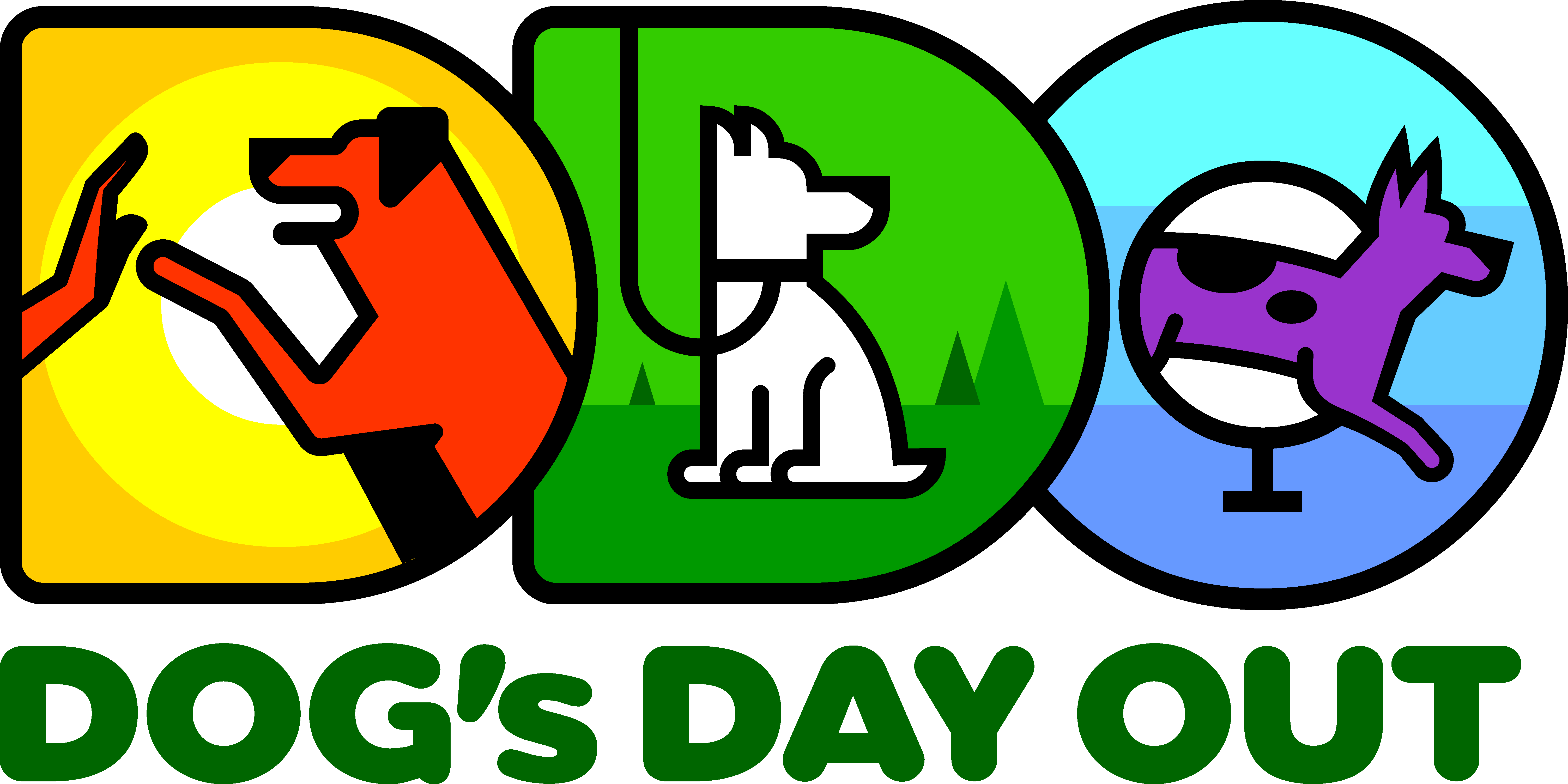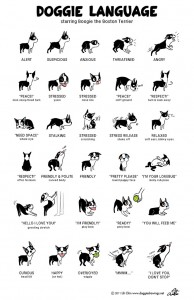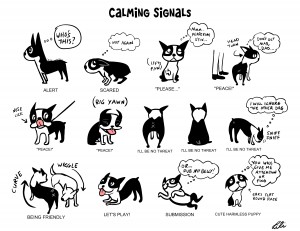People often ask me how I train. Well, before we can even train our dog cues we need to know how our dog thinks and learns as well as how to manage behavior. As a trainer I tell folks that a big part of “training” (especially with young or new dogs!) is actually just management. Here are my tips for living happily (and peacefully) with your dog…
*If you would like an extended version of this post in video form, the 75-minute Behavior Basics Webinar is available for $25. Just email Info@dogsdayoutseattle.com to purchase.
1. Your dog is a dog. He is not a small furry human with four legs. He thinks and acts like a dog and understands canine behavior. It is important for humans to understand some basic canine behaviors and their way to thinking and learning before we can attempt to teach them anything. Love and respect your dog by letting them be a dog!
2. A dog’s first language is body language and tone of voice. Most of the time dogs “disobey” simply because they do not understand what we are asking of them. They are not being “spiteful” or “angry;” they just don’t get it! We need to try to understand their language (body & tone) in order to teach them ours (verbal). One example of this type of miscommunication can happen when we come home and see the dog has destroyed the couch/rug/door frame. We have a very angry tone to our voice. The dog is cowering and “looking guilty”. We think “see, he knows he was bad.” Actually, he does not know what you are angry about or that the destruction was bad, but he definitely knows, by your tone, that you are angry. Your reaction is likely to confuse him (see #6).
3. Become fluent in canine body language. Many people I meet have no idea what their dog is telling them with their body language. Learn how to read these body signals. Know what happiness, fear and stress look like in your dog. See pics HERE and below!
4. Teach your dog what TO do, not what NOT to do. It’s easier. When your dog is doing something you do not like (jumping on people, pestering you at the dinner table) think about what you would rather him do in that circumstance (sit for a greeting, wait on his mat while you eat) and teach him how to do that.
5. Yes, dogs like guidance and structure but dominance theory and “being the alpha” are myths disproven and debunked by science. Sure, they are our friends, companions and playmates but they are not exactly our equal either. We are wholly responsible to feed, protect and care for them. We buy the food and pay the rent! Just like children, dogs need kind, sound, fair leaders who can provide structure and guidance. Contrary to some popular belief, we do not live in a hierarchal “pack” with our dogs but we do live in a family-type structure with them with us humans being “parents” i.e. fully responsible for their physical and emotional well-being. By the way, dominant and submissive describe a relationship between beings; they are not personality traits.
6. Dogs live in the here and now. Dogs must be rewarded or punished for behaviors as the dog is exhibiting the behavior. Punishment is not a sound approach in dog training. Punishing a dog for something that occurred 2 hours/30 minutes/2 minutes ago doesn’t work and can further confuse and frighten your dog.
7. Dogs do what works for them. Dogs are very good at continuing behaviors that give them some type of reward or reinforcement. They will also stop a behavior if they are not being rewarded or reinforced in some way. Rewards are different to different dogs and have different values. Rewards may be external: food, ball, attention, play etc. or inherently rewarding such as chewing, digging and relieving himself. Find out what is most rewarding to your dog. For some dogs, giving a scratch on his head/ears is a reinforcer, for other dogs it’s an aversive – get to know your dog!
8. Dogs are lousy at generalizing. Dogs need to proof (repeat) behaviors many times in many different environments before the behavior is generalized. Just because your dog “knows” sit in your kitchen does not mean he knows it outside of a busy coffee shop.
9. You are “training” your dog all the time. If you are not there to praise him for good behaviors and prevent his bad behaviors then he will not learn which behaviors are desirable and which are not. Chewing, jumping, digging and relieving himself all feel good and are inherently rewarding to your dog. You need to teach him the appropriate time and place for these activities. Lots of “training” issues are really management issues. Manage the environment of any new dog (puppy or adult) meaning supervise or confine at all times so they are not able to “practice” behaviors you do not want to see more of. Remember, if they are being reinforced for a behavior, it will happen again. If they jump on a kitchen counter and get a bread crumb, they will jump again because they were rewarded for the behavior of jumping on the counter! In the beginning, you will need to actively supervise or physically confine them so they do not have access to practice the behavior. Preventing undesirable behaviors before your dog can be rewarded (by performing the inherently rewarding act itself) can go a very long way. Keep sessions short. We know dogs learn best in 2-5 minute increments. So, instead of trying to train your dog for 30 minutes/day, instead incorporate your training sessions into everyday tasks and activities.
10. No two dogs are the same. Dogs are all individuals with individual personalities and breed characteristics and should be treated as such. You may have to get creative in your training to find out what works for (reinforces) your particular dog.
11. Use food. There are definitely different reinforcers for dogs (find out which are your dog’s) like play, sniffing, movement, interaction with humans and/or dog, and more BUT food is our most valuable resource – use it! Food is what is called a “primary reinforcer.” It’s also portable and easy to use. We are all “food motivated,” I am, you are and so is your dog – if we don’t eat, we die. We know that dogs actually prefer to “work” for their food so let your dog have some fun (and burn off a little mental energy while you’re at it) by feeding your dog creatively.
12. Focus is everything. It is important for your dog to “buy in” to the training. Training with you should be FUN, not a drag. Start all training with simple Focus Games & Cues. I want my dog to want to work with me.
13. Can my dog sleep in my bed/sit on my couch? The majority of dogs have no problem sharing our space. This one is up to you. If you don’t want your dog on your furniture you are in no way denying them (just make sure they have a nice cushy bed of their own, maybe two). If you do want them on the furniture, I recommend you teach them “off” and “on” cues so that if you happen to have people over (or just vacuumed) and don’t particularly want them on the couch you can get them off and it’s no big deal. Just make sure they have a nice alternative spot nearby. If you have a dog who is snarky (growls, snaps) at anyone when they get on the bed/couch, or when you try to get them off, that dog may be resource guarding the space and should not be allowed on until that behavior is addressed and changed.
14. Don’t chase your dog and never take something from his mouth. Your dog may try to steal objects from you to try to get you to chase him. It’s a fun game – don’t fall for it! In the early stages of your relationship I recommend letting your dog chase you (and making it super fun when he gets to you – that’s teaching a recall) but not chasing your dog. If you chase your dog you may be teaching him you run AWAY from you. Most folks I know are trying to get their dog to COME. If your dog did grab something and is trying to get you to chase him (and the object he has) try turning around and ignoring him (game over=BORING). He may just drop the item (unless, of course, it’s a steak!). If it is something truly important to you or dangerous to your dog, run instead to the refrigerator, get a delicious something, wave it over your head to get your dog running to you and exchange it for the item he has. Call it bribery if you will, but I have no problem with bribery in this scenario. If your dog loves to chase, definitely let him chase you! Just have a rope or toy in your hand so that when he gets to you, he can be rewarded with a fun game of tug or a toss of his toy.
What you do NOT want to do is pull something from your dog’s mouth. If we take an item from a dog, he may feel the need to guard it (more fiercely possibly) next time. Let a dog know that if we say “drop” it is a good thing for the dog because he is likely to get something better.
15. Ignoring unwanted behaviors goes a long way. Many unwanted behaviors (jumping up, mouthing, barking at us, pawing, nose-butting) are sometimes called attention-seeking behaviors (I prefer “engagement-seeking”). Since dogs do everything for some kind of reward, and attention from us being a great reward for most, by giving any attention to these behaviors, even negative (“no” “stop” “get off me” “ssshhh”) we are inadvertently encouraging them. But be careful of frustration.
16. Catch your dog doing the right thing. If your dog looks at you when passing another dog, chooses not to jump on a passerby or happens to go lay on his rug when you are busy, be sure to mark that behavior (“yes” or click) and reward him! If your dog does the “wrong” thing, nothing happens – no “corrections” or use of aversive tools are ever needed to train a dog.
17. Your house your rules! There are actually very few definite NO’s for living with your dog but you may have some behaviors that just don’t fly in your house. Hang out with a bunch of positive reinforcement dog trainers and you might be surprised at how much freedom our dogs are allowed at home. Because I live in an urban area, it is important for my dog to be able to walk on a loose leash and not pull me down the road. I also want my dog to be able to relax with our family when we go out to outdoor cafes or events. These are important for a dog in my life so these are the things I actively train. One of my past dogs was VERY friendly when people came to visit and would jump on them. Since a 50 pound bowling ball coming at you was not gonna fly in my house, I taught him an alternate behavior when people entered (grab a toy). He did not need to go to another room or even station on a mat (another good alternative though) just, in my house the rule was don’t jump on people, but you can run all around the living room with a toy in your mouth if you want!
18. No one is 100%. I’m not perfect, you’re not perfect and neither is your dog. We all make mistakes and none of us does everything perfectly every time. Give your dog (and yourself) a break every once in a while. Keep your expectations realistic for all involved.



